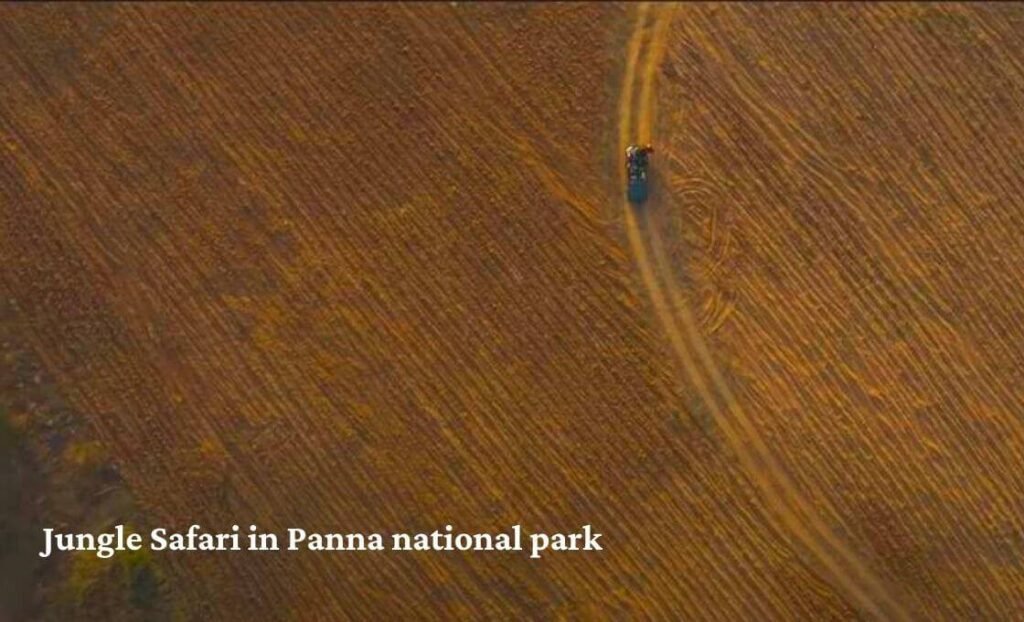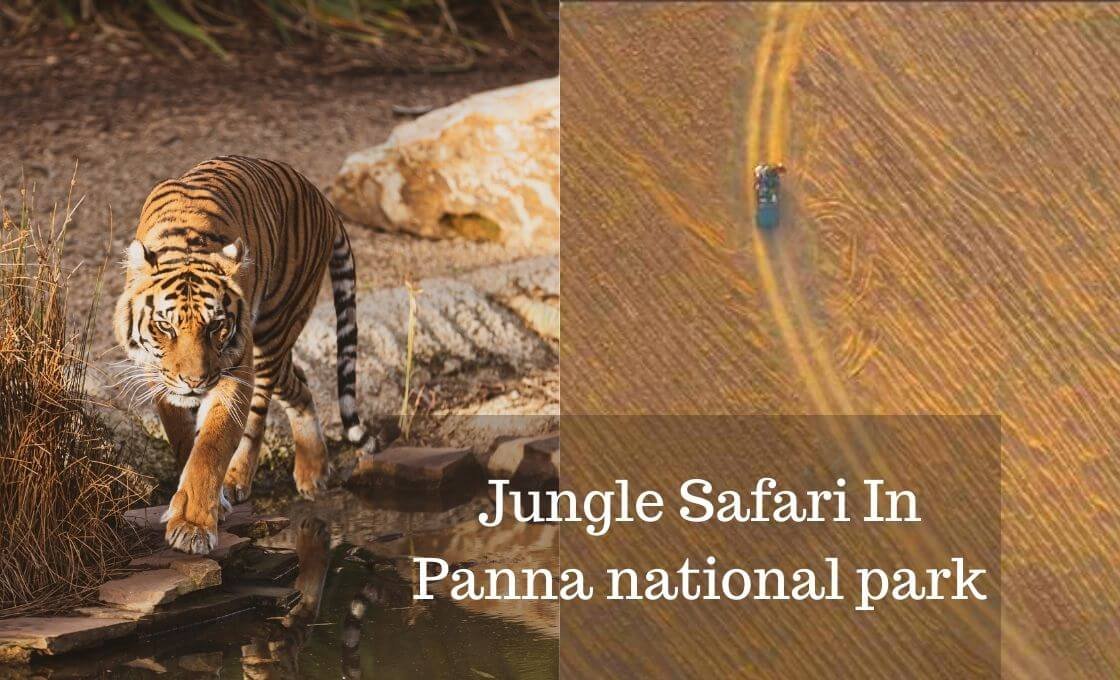The wildlife sanctuary of Panna, Panna national park is India’s 22nd Tiger Reserve. Situated between Panna and Chatarpur Districts of M.P, this beautiful national park is very close to the Indian heritage site Khajuraho. A jungle safari in this Panna sanctuary is a wonderful experience where you travel in an open Jeep through the dense forest and beautiful canyons while witnessing wild animals getting through their normal day, doing their own things.
Things you must know before going to Panna national park(Panna tiger reserve)
- Also read – 15 best places to see near Chitrakoot Dham
- 15 most beautiful places to visit in Khajuraho
Panna national park is primarily famous for its tiger but it has also got around 8 varieties of exotic creatures such as leopard. The national park is not only a wildlife enthusiast’s dream, but it also possesses natural beauty. Beautiful gorges and captivating waterfalls
are a visual feast. Boating on the Ken River adds to the enjoyment of your trip.

If you are planning to take a trip to Panna national park then you should read this blog till the end.
History of Panna National Park
Panna National Park used to be a private hunting preserve for the rulers of the states of Panna, Chhatarpur, and Bijawar. The national park, together with the Gangau reserve, was established as a wildlife sanctuary in 1981. Panna National Park is India’s 22nd Tiger Reserve and the fifth in the state of Madhya Pradesh in central India. It was upgraded to a Tiger Reserve in 1994, with the inclusion of some other wilderness areas, such as the Ken Gharia nature preserve. The Pandavas spent a lengthy time in exile in the Panna jungles, according to the Mahabharata.

In order to save the tigers, the national park had to deal with a number of issues. Two female tigers were transported here from Bandhavgarh and Kanha National Parks in March 2009. Surprisingly, it was revealed in June 2009 that the sanctuary, which had roughly 40 tigers six years prior, had been reduced to only two tigresses. The Ministry of Environment and Forests agreed to move two tigers and two tigresses to the reserve as a result of this. They came from places like Pench National Park, Bandhavgarh National Park, and Kanha National Park, among others.

Type of wild life creatures in Panna national park
Tigers, along with other animals such as the leopard (Panthera pardus), wild dog (Cuon alpinus), wolf (Canis lupus), hyaena, caracal (Felus caracal), and other smaller cats, graze freely here. Sloth bears can be found in the calm valleys and rocky escarpments. Sambar, the largest of the Indian deer, chital, and charsingha abound in the wooded areas. Nilgai and chinkara can be found in wide areas of grasslands, especially on the outskirts.
Avifauna: There are around 200 species of birds in the avifauna, including many migratory birds. White-necked stork, bareheaded goose, honey Buzzard, King vulture, Blossom-headed parakeet, and Paradise flycatcher are some of the birds you might see here.
Snakes: A wide range of snakes, including pythons, can be found here.
Jeep safari experience in Panna national park and tiger reserve
The Panna national park’s jeep safari is a fantastic experience. You’ll see a range of unique creatures and plants as you drive through uneven terrains and thick rain forest. There are two jungle safari choices: one in the morning and one in the evening. A total of 63 jeeps are allowed to enter the park at any particular time, with a maximum of seven tourists in each vehicle. You can also choose to boat on the Ken River while on a safari to have a closer look at aquatic species.
Safari timings-
Winter (Oct to Jan)- Morning- 6:30 AM to 10:30 AM, Evening- 1:30 PM to 5:30 PM
Summer (Feb to June)- Morning – 6:00 AM to 10:00 AM, Evening- 2:30 PM to 5:30 PM
Panna National Park Timings and Entrance Fee
The timings are 6:30 AM – 10:30 AM and 2:30 AM – 5:30 PM.
The entry fee is INR 40 for Indians & INR 500 for foreigners.
Jeep rental- INR 1500/half day.
Camera- INR 40 (still) & INR 200 (video)
Guide- INR 100/vehicle,
Private vehicle entry- INR 150,
Boat Ride- INR 150 for Indians and INR 150 for foreigners
Elephant safari- INR 100 for Indians and INR 600 for foreigners
Night Safari- INR 1800/jeep (including entry fees)
The best time to go to Panna National Park?
The best time to visit Panna National Park would be between November and April when the climate is pleasant. In long winters, the average temperature is between 8 to 30 degrees Celsius. The chances of seeing animals are very good in March and April. Summers are blisteringly hot, with average temperatures up to 45 degrees Celsius. Monsoons are also not advised for visiting the national park because heavy rains are common, and jungle safaris are not accessible.
Plecaustion to know before visiting Panna National Park
- Trying to feed the animals is not a smart idea.
- Wearing vibrant colors that can attract wild animals is not a good idea.
- Avoid driving into restricted locations. While on a jungle safari, follow the rules and regulations.
- Take water bottles, sunscreen, and scarf to shield yourself from the sun.
How To Reach Panna National Park
The road network to Panna National Park is excellent; the bus stop is at Panna town, which is well connected to Khajuraho, Satna, and many other sites in Madhya Pradesh. Madla, about 24 kilometers south of Khajuraho, is an excellent transportation hub. Here, buses and various forms of transportation systems may be used to the Panna National Park.




